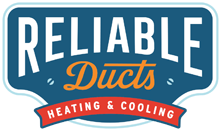In the ever-evolving quest for superior indoor air quality, innovative solutions are continuously being explored to combat airborne contaminants effectively. Among these solutions, UV lights have emerged as a powerful tool, offering a proactive approach to air purification within HVAC systems. Let’s delve deeper into the transformative potential of UV lights and their impact on indoor air quality.
UV lights, particularly UV-C lights, emit ultraviolet radiation with germicidal properties. When strategically installed within HVAC systems, these lights target and neutralize a wide range of airborne pathogens, including bacteria, viruses, mold, and allergens. By disrupting the DNA of these microorganisms, UV-C radiation renders them unable to replicate, effectively sterilizing the air as it passes through the system.
One of the primary functions of UV lights in HVAC systems is to address biological contaminants that can proliferate within the system’s components. As air circulates through the system, moisture often accumulates on surfaces such as evaporator coils, drain pans, and ductwork, creating an environment conducive to microbial growth. In these areas, UV lights irradiate the surfaces, preventing the buildup of mold and bacteria and ensuring cleaner, healthier air distribution throughout the space.
Moreover, UV lights are crucial in eliminating foul odors associated with mold and mildew growth within HVAC systems. These microbial colonies can produce musty odors that permeate indoor spaces, compromising comfort and air quality. UV-C radiation effectively neutralizes the microorganisms responsible for these odors, resulting in fresher and more pleasant indoor environments.
In addition to their air purification benefits, UV lights contribute to the overall efficiency and longevity of HVAC systems. UV lights optimize heat exchange and airflow by keeping key components such as evaporator coils clean and free from microbial buildup, reducing energy consumption and minimizing strain on the system. This leads to cost savings and extends the lifespan of the HVAC equipment, providing long-term reliability and performance.
Furthermore, UV lights offer a passive and continuous air purification solution that complements existing filtration systems. Unlike traditional air purifiers that rely on filters to capture particles, UV lights provide an additional layer of protection by targeting contaminants at the molecular level. This ensures thorough and ongoing air sanitation with minimal maintenance requirements, making UV lights a cost-effective and efficient solution for improving indoor air quality.
In conclusion, UV lights represent a groundbreaking approach to indoor air purification, offering a proactive and effective solution for combating airborne contaminants within HVAC systems. By harnessing the germicidal power of ultraviolet radiation, these lights transform HVAC systems into veritable air-cleaning heroes, ensuring cleaner, fresher, and healthier indoor environments for occupants. Whether in residential, commercial, or industrial settings, the integration of UV lights into HVAC systems heralds a new era of indoor air quality management, promoting comfort, well-being, and peace of mind.
